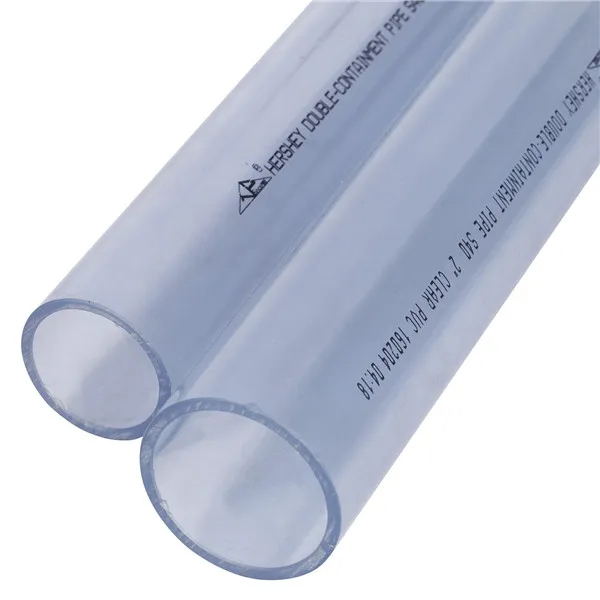Aug . 07, 2024 17:15 Back to list
Understanding the Benefits and Applications of PVC-O Pipe in Modern Infrastructure Solutions
Understanding PVC-O Pipes A Revolutionary Solution for Water Management
Polyvinyl chloride, commonly known as PVC, has been a staple in various industries for decades. However, the introduction of PVC-O (oriented polyvinyl chloride) has revolutionized the way we approach piping systems, particularly in water management and infrastructure. This article explores the properties, manufacturing process, benefits, and applications of PVC-O pipes.
What is PVC-O?
PVC-O is an advanced form of polyvinyl chloride that undergoes a unique manufacturing process to enhance its performance characteristics. During production, the PVC material undergoes a procedure called molecular orientation, which aligns the molecular chains in the material. This process creates a stronger and more flexible product, making PVC-O pipes suitable for demanding applications, especially in the water supply and wastewater sectors.
Manufacturing Process
The production of PVC-O pipes involves several complex steps, beginning with the conventional PVC resin. This resin is first subjected to heat, transforming it into a viscous state. Next, the material is stretched in one or more directions, which aligns the molecular chains in a way that significantly enhances its mechanical properties.
Once the molecular orientation is complete, the material is cooled and solidified, after which it is extruded into pipe form. The result is a lightweight yet sturdy pipe with excellent impact resistance and the ability to withstand high pressure. PVC-O pipes usually come in various diameters, making them adaptable to a range of applications.
Benefits of PVC-O Pipes
1. High Strength-to-Weight Ratio One of the most notable features of PVC-O pipes is their excellent strength-to-weight ratio. They are considerably lighter than traditional materials like ductile iron or concrete, which simplifies handling, transportation, and installation.
pvc-o pipe

2. Resistance to Corrosion PVC-O pipes do not corrode like metal pipes. This resistance to chemical and environmental degradation ensures a longer service life and reduces maintenance costs significantly.
3. Hydraulic Efficiency The inner surface of PVC-O pipes is smooth, which contributes to lower friction losses. This means that water can flow more efficiently, leading to reduced energy costs for pumping.
4. Sustainability PVC-O is not only efficient but also an environmentally friendly choice. These pipes can be recycled, reducing waste and promoting sustainable practices in the construction industry.
5. Cost-Effectiveness While the initial investment in PVC-O may be comparable to that of other materials, the longevity, low maintenance, and energy efficiency translate into significant savings over time.
Applications
PVC-O pipes are extensively used in various applications, primarily in water supply and distribution systems. They are ideal for both potable and non-potable water transport, sewer systems, and irrigation networks. Additionally, their resilience makes them suitable for industrial applications and in environments where pipes are exposed to corrosive elements.
Moreover, the lightweight nature of PVC-O pipes allows for easier installations in challenging terrains or areas where traditional heavier materials would be impractical. As municipalities strive to modernize infrastructure, PVC-O presents a viable solution to meet growing water management needs.
Conclusion
In conclusion, PVC-O pipes represent a significant advancement in pipe technology, combining strength, flexibility, and efficiency. As the demand for reliable and sustainable water management solutions continues to grow, understanding and utilizing innovative materials like PVC-O will be crucial. These pipes not only provide effective solutions for current infrastructure demands but also offer a sustainable approach to address future challenges in water distribution and management. The ongoing development and acceptance of PVC-O in various sectors affirm its role as a reliable choice for modern piping solutions.
-
Durable Glossy PVC Rigid Sheet | Premium High-Shine Panels
NewsAug.26,2025
-
Durable PP Rigid Sheet: Lightweight, Chemical Resistant Solutions
NewsAug.21,2025
-
PVC Grey Sheet for Extraction: Chemical Resistant & Durable
NewsAug.19,2025
-
Durable PVC Pipe Fittings for Plumbing & Irrigation Needs
NewsAug.18,2025
-
HDPE Steel Belt Reinforced Spiral Corrugated Pipe | High Strength
NewsAug.17,2025
-
HDPE Pipe Fittings: Durable, Leak-Proof Solutions
NewsAug.16,2025

